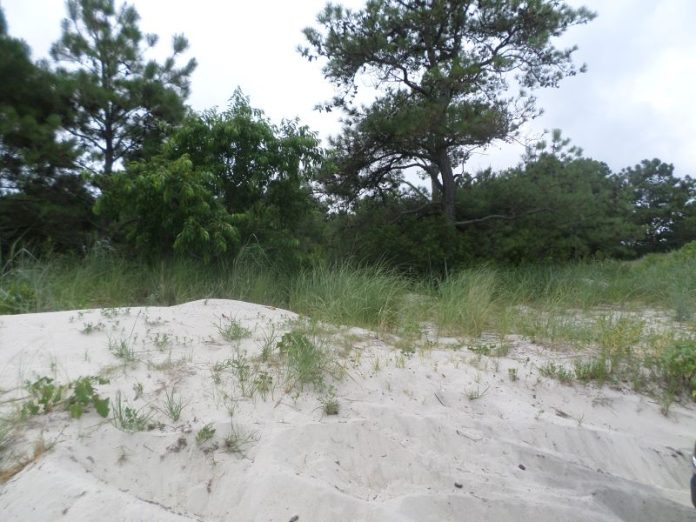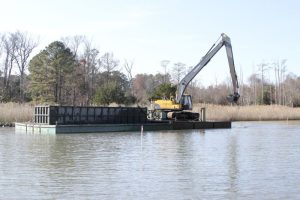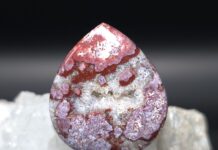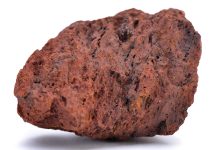
Are we running out of sand? Our need for sand is insatiable. We all use it every day and don’t even realize it. Glass made from melted sand is used in our home windows, cell phone screens and drinking glasses. We eat from stoneware plates that are made from bone ash, kaolinite, sand and feldspar. We drive on roads that use asphalt combined with sand and gravel and concrete made from sand, water, aggregate and cement. We work in office buildings that are made of thousands of tons of sand.

Why Mine Sand?
Why does anyone mine sand when the deserts should have all anyone could ever need and more? It seems like there is so much that people don’t stop to ask are we running out of sand. The problem is that only certain places have the sand we need for most purposes. Concrete is the second most-used construction material in the world. Desert sand usually is only suitable for certain products like glass because of how the sand was carried to the desert. Wind brought most of it and it is of a fine grain size with pitted surfaces. The grains are rounder than the sand derived from water transport and deposition. Only in a few limited desert areas such as California’s Mojave Desert was the sand deposited in ancient riverbeds and lakes. Concrete made with most desert sand can fall apart because the sand that is meant to help the concrete bind with the other materials does not bind well. What we need for building materials are sand grains with angular edges and this is found on deltas, in lakes and rivers and on beaches.
Quartz sand from waterborne sources is not usually pure quartz. It is mixed with small percentages of feldspar, coral and shell fragments.
Are We Running Out of Sand? Big Business
Mining sand is big business in many countries. In the United States, the majority of waterborne sand mined for use in construction comes from inland sand quarries. It is ancient lake or marine sand deposited millions of years ago. However, some sand is mined from beaches. Mining beach sand is harmful for the environment because removing it from riverbeds destroys bottom-dwelling plant life and churns up finer-grained sediments for a time, choking fish and other living things.
The loss of sand usually means increased beach erosion, increasing the vulnerability of properties along the waterfront and allowing undermining. Removing sand from deltas and beaches destroys habitats for tiny crustaceans, fish and other animals vital to the ecosystem. It removes beachfronts that support dune grasses and other plants needed as a place for shorebirds and many other animals to hide and build nests.

Courtesy U.S. Army/Patrick Bloodgood
Legal Mining
Is sand mining in various countries legal? Some is. When sand is removed from river mouths in most of the United States, the purpose is to remove shoals that hinder navigation. The sand removed is often used beneficially as beach nourishment elsewhere. If it is not suitable, it goes to an approved upland fill site. Most states have laws preventing commercial mining of beaches or waterways but some states do allow it.
Populous Singapore has built artificial islands using purchased sand. Cambodia, Malaysia and Indonesia lost so much sand by selling it to Singapore that they have either restricted or banned sand sales entirely. The largest city in rapidly urbanizing Nigeria is adding a 2,400-acre extension to a portion of its beachfront. There are few environmental regulations in that nation. China added entire islands to its coasts to support seaside resorts, all with minimal to no environmental oversight.
Illegal Sand Mining
Some sand mining is illegal. Criminal groups bypass the permitting requirements for beach sand mining operations in Nigeria and India, where sand mining and sales are by permit only. In these clandestine operations, workers are often killed in accidents caused by unsafe, cost-cutting practices like diving to the bottoms of rivers without being provided scuba gear by their employers. Criminals recently murdered a Mexican environmental activist investigating illegal mining in that country. In parts of South America and Africa, children are forced to work in the illegal beach and delta mine operations. Since much of this illegal sand mining is not documented, no one is sure how many hundreds or thousands of cubic yards of sand are being mined from any given location.
Western Europe, which has largely stopped beach sand mining, still has problems with sand theft. A beach at Tiree, Scotland boasting sand so crystalline that the area has become known as the “Hawaii of the North” has suffered from “sand rustlers” who come down to the beach at night and early dawn to illegally remove the sand for presumed use as bedding down places for cattle and places for their cattle to stand comfortably during winter. The “factor” of the beachfront development of Argyll Estates suspected the wealthier farmers of the area of these thefts but no one came forward to make accusations because these individuals are well known, according to a January 2023 newspaper story in The Telegraph. The Tiree Community Council has encouraged residents to work constructively with the local farmers to agree on what constitutes sustainable and acceptable use of the sand.

Courtesy Wikimedia Commons
Are We Running Out of Sand? Exploring Alternatives
Many government leaders are concerned about the question are we running out of sand. They are looking hard for alternatives to mining beach and river sand, like substituting fly ash for sand in concrete or recycling old concrete. Scientists are trying new ways to heat and crush desert sand grains so they can be used for concrete. The challenge is to do it in a way that is cost-effective so that companies can afford to use the abundant sand of the deserts and reduce or stop using river and beach sand. A new company named Finite seeks ways to use this sand and is working with researchers from Imperial College London to develop a composite material that binds fine powders with desert sand to make a concrete-like material that is recyclable too. This new material needs more testing and certifications before it can go into wide use.
Three-dimensional printing of concrete structures using desert sand is also being studied. The advantages of flexibility and mechanization could be used to great effect and local materials such as desert sand could be used. Satisfactory compressive strength using desert sand was demonstrated at a 2020 expo in Dubai. Researchers are exploring the pros and cons including lower air pollution, less freshwater contamination and availability of electricity in developing countries.
Using Desert Sand for Concrete
A recent study by Mengdi Liu, Engui Liu, Jian Li Hao, Luigi Di Sarno and Jun Xia summarized investigations into making desert sand an option for use in concrete. Calcined clay, slag, fly ash and volcanic ash are also used for this purpose. Desert sand that has been milled has proven in trials to make products comparable to Portland cement. Another study these researchers summarized said that dune sand powder mixed with cement mortar improved the composite cement’s strength and practical use in building materials. The most prevalent minerals in desert sand powder used in the study were quartz and calcite. Carbon emissions of this new technique were comparable to existing practices of using fly ash, volcanic ash, slag and calcined clay.
This challenge to replace waterborne sand with windborne sand in concrete and roadway construction is ongoing and sustainable solutions are vital to address the question of are we running out of sand. Our need for sand is only going to increase and humans cannot continue relying indefinitely on waterborne sand sources.
This story about are we running out of sand previously appeared in Rock & Gem magazine. Click here to subscribe. Story by Deborah Painter.















